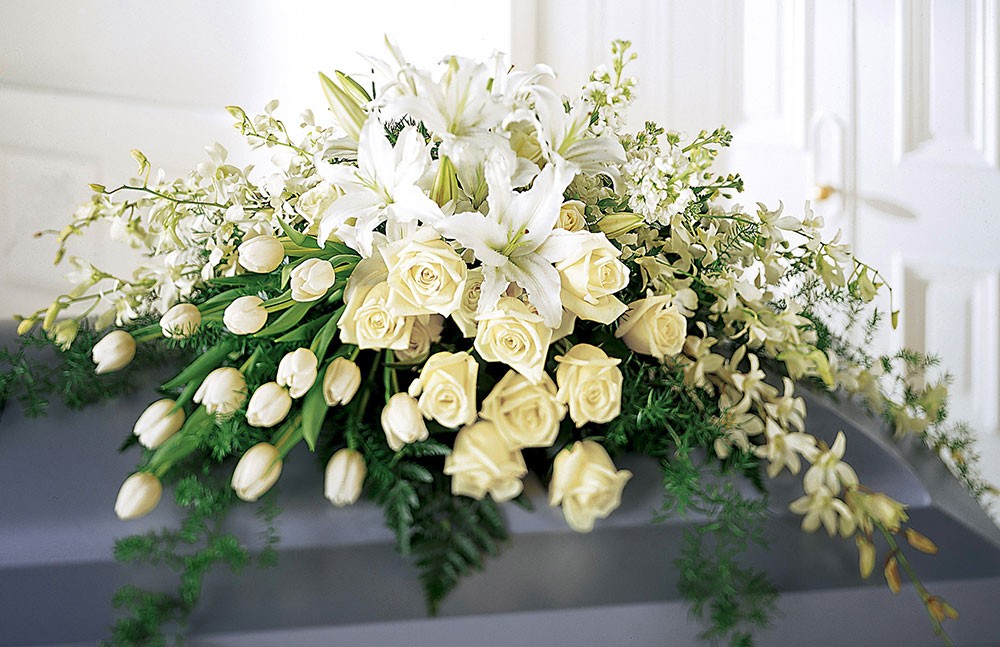Many people opt to give flowers to someone who has died. Flowers are a symbol of life, but they can provide comfort in times of death. Flowers are a common feature of funeral ceremonies in most cultures and are a big aspect of memory at death.
Even though people die all the time and almost everyone has been to a funeral at some point in the lives when the time comes, questions regarding funeral etiquette surface right away. No matter how many times you’ve lost a loved one, reminders of correct, polite deeds, dress, and demeanor are always needed. We will learn about the etiquette when sending flower arrangements for a funeral service.
Funeral Flower Etiquette: A Quick Guide
Any of the two options is acceptable. It’s a good idea to give a huge arrangement to the funeral home so that it can be used to decorate the funeral services. This is especially common when an arrangement is sent by a group of people – coworkers, book club members, and so forth. A smaller, more personal arrangement from a close friend might be appreciated at the family home, where it would serve as a constant reminder of how much you care.
They’re termed funeral flowers if you’re sending them to a funeral home, and sympathy flowers if you’re sending them directly to the bereaved family. If you’re not sure, sending an arrangement to the funeral home is a safe bet.
What’s the difference between sympathy and funeral flowers?
Flower are often delivered to the funeral or cremation site, while sympathy flowers are delivered to the departed person’s family’s home or business. Close family members or relatives usually order Flowers for a funeral or memorial event. These are typically very formal arrangements like casket sprays or flowers on enormous stands to decorate the church or funeral home. Some examples can be found here.
You can send flowers at a funeral or sympathy flowers, but keep in mind that if there are a lot of flowers, they may get lost or overlooked by the deceased’s family. You can also bring flowers with you.
Concerning Belief
Before gifting flowers, you should think about the deceased’s religion and culture. What is acceptable in one culture may not be acceptable in another. If you’re unsure, consult your nearest family member.
Faith-based common practices include:
Most flowers and arrangements are appropriate for Catholics.
Most flowers and arrangements are welcome at both the memorial service and the funeral for Protestant Christians.
Mormon – Almost any flower will suffice. On the other hand, arrangements on a crucifix or cross should be avoided.
When is the best time to send funeral flowers?
You can order the flowers as soon as you learn of the death or learn which funeral home the family has selected. You’ll coordinate with the flower delivery service to ensure that they arrive on time for the services. However, if you desire, you can send flowers afterward.
Sadness doesn’t go away after a funeral, and grieving friends would appreciate it if you remembered them a few weeks or months later. You can send flowers on or after the first anniversary of their death.
What kind of flowers should I give to express my condolences?
Funeral and sympathy flowers are more formal than other types of floral arrangements. Lilies, roses, or gladioli are good choices for a traditional look. Snapdragons, stock, larkspur, and carnations are some of the most popular flowers. Daisies and sunflowers, which have a more informal garden air, are less usually chosen. However, there are no hard-and-fast rules for selecting sympathy flowers. Ask your local florist to add tulips to your arrangement if you’re honoring someone who liked them.
What are the most popular types of funeral flowers?
Various traditional flower kinds are appropriate for funerals or expressing condolences. Here are a few of the popular and their symbolic significance.
Lilies – represent the soul’s return to its original state of purity.
Orchids – whatever hue they are, they all symbolize “I will love you.”
Carnations – the hue conveys the significance of the flower. White denotes purity, whereas red denotes affection.
Chrysanthemums are a flower that represents sympathy and honor. The colors also influence the meaning. The colors red and white represent love and innocence, respectively.
White roses are the quintessential symbol of spirituality, purity, and innocence. The rich red rose conjures up feelings of love and loss.
What Is the Best Way to Send Flowers at a Funeral?
Flowers are a traditional way to express sorrow and condolences following a death. Because customs vary per country, it can be difficult to know how to choose and order the appropriate arrangement. Check out our Funeral and Sympathy Collection, and use these quick and easy tips to get what you’re looking for.
It’s better to honor the family’s desire for donations instead of flowers at the funeral. Cut flowers, baskets were given to the home, in addition to a donation, which can be uplifting.
Is it better to send flowers to the family’s residence or the funeral home?
Your relationship with the family will determine this and if the death was a close friend or a significant role in the life of someone close to you. Sending a lovely bouquet to the family home may be the greatest way to make a more personal touch.
Send a floral arrangement to the funeral home instead if you believe it would be more fitting. For family homes, smaller condolence floral arrangements and posies are usually preferable. Sending larger flowers and funeral wreaths to the funeral home is generally preferable.
Following the Funeral
You may be wondering what happens to all of the lovely flowers after the funeral. Your flowers could end up in a variety of areas.
After the burial, some flowers are brought to the cemetery and placed on the grave.
However, the family may take them home after the funeral to enjoy them in many cases. However, there are situations when they are so many that some are left at the funeral home. You could wish to send your flowers to their home in the first place if you want to make sure they get home with the family.




